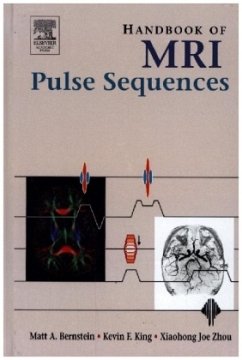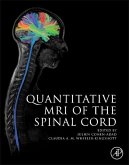Magnetic Resonance Imaging (MRI) is among the most important medical imaging techniques available today. There is an installed base of approximately 15,000 MRI scanners worldwide. Each of these scanners is capable of running many different "pulse sequences", which are governed by physics and engineering principles, and implemented by software programs that control the MRI hardware. To utilize an MRI scanner to the fullest extent, a conceptual understanding of its pulse sequences is crucial. Handbook of MRI Pulse Sequences offers a complete guide that can help the scientists, engineers, clinicians, and technologists in the field of MRI understand and better employ their scanner.
"...I believe it will become the 'gold standard' text for people involved in MR research or applications because of its clear and concise descriptions of most aspects of MRI." --Michael Jacobs, Johns Hopkins School of Medicine, Baltimore, Maryland in the JOURNAL OF MAGNETIC RESONANCE IMAGING (2006)
"...an outstanding reference source that covers all the important aspects of pulse sequence design and implementation...it fills an important gap not addressed by the other texts on MRI physics. It should be on the shelf or next to the pulse programming computer of anyone who designs sequences or is a serious user of MRI/S methods of any type. The book will stand the test of time, even in a field as rapidly evolving as MRI, and will become a definitive classic." --G.H. Glover, Stanford University School of Medicine (2005)
"...a tour de force; the authors have written an exemplary pedagogical treatise on MRI pulse sequences targeted to scientists and engineers interested in understanding and constructing pulse sequences. While the book states as a prerequisite a basic understanding of MR physics, even someone with only a rudimentary understanding of MR can follow most of the discussion, which I attribute to the masterful execution by the authors. The writing is consistently good across all chapters...Anyone conducting research that makes use of the current state of MRI techniques should have this book on the shelf. It could serve as a reference for an advances course or a laboratory course on MRI pulses." --Medical Physics (May 2005)
"...an outstanding reference source that covers all the important aspects of pulse sequence design and implementation...it fills an important gap not addressed by the other texts on MRI physics. It should be on the shelf or next to the pulse programming computer of anyone who designs sequences or is a serious user of MRI/S methods of any type. The book will stand the test of time, even in a field as rapidly evolving as MRI, and will become a definitive classic." --G.H. Glover, Stanford University School of Medicine (2005)
"...a tour de force; the authors have written an exemplary pedagogical treatise on MRI pulse sequences targeted to scientists and engineers interested in understanding and constructing pulse sequences. While the book states as a prerequisite a basic understanding of MR physics, even someone with only a rudimentary understanding of MR can follow most of the discussion, which I attribute to the masterful execution by the authors. The writing is consistently good across all chapters...Anyone conducting research that makes use of the current state of MRI techniques should have this book on the shelf. It could serve as a reference for an advances course or a laboratory course on MRI pulses." --Medical Physics (May 2005)








